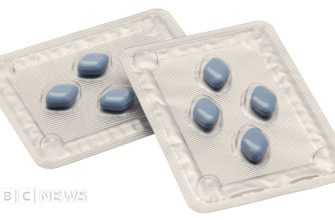Suspect you might have a gut infection? Doctors often prescribe Flagyl, generically known as metronidazole, for a range of bacterial and parasitic infections. This powerful antibiotic works by halting the growth of bacteria and parasites in your body. You need to understand, though, that Flagyl doesn’t work against viral infections like the common cold or flu, so don’t reach for it at the first sign of sniffles.
Before you begin a course of Flagyl, be sure to tell your doctor about any other medications you’re currently taking, especially blood thinners like warfarin. Flagyl can increase the effects of these medications, potentially leading to complications. Also, alcohol is a definite “no-no” while you’re on Flagyl and for at least three days after you finish the treatment. Combining alcohol with Flagyl can cause unpleasant side effects, including nausea, vomiting, and headaches.
The typical dosage of Flagyl varies depending on the specific infection being treated, but it’s usually taken two to four times a day for a week or more. Always follow your doctor’s instructions carefully and complete the entire course of medication, even if you start feeling better before it’s finished. Stopping the medication early can allow the infection to return and potentially become resistant to the antibiotic. Be aware of common side effects like a metallic taste in your mouth, nausea, and diarrhea. If these or any other side effects become severe or concerning, don’t hesitate to contact your doctor.
- Antibiotic Flagyl: A Comprehensive Guide
- Dosage and Administration
- Potential Side Effects
- Interactions and Precautions
- Flagyl: Approved Uses
- Specific Infection Guidelines
- Combination Therapy Considerations
- Flagyl: Dosage and Administration
- Flagyl: Common Side Effects
- Flagyl: Drug Interactions
- Medication Adjustments
- Monitoring for Side Effects
Antibiotic Flagyl: A Comprehensive Guide
If you suspect you have an infection treatable with Flagyl (metronidazole), consult your doctor. They’ll determine if it’s the right medication for your specific condition.
Flagyl is a potent antibiotic primarily used to combat bacterial and parasitic infections. It’s especially effective against:
- Bacterial vaginosis
- Trichomoniasis
- Giardiasis
- Amoebiasis
- Anaerobic bacterial infections (often in the gut)
To maximize Flagyl’s impact and minimize side effects, adhere closely to your doctor’s instructions.
Dosage and Administration
Dosage varies based on the type and severity of the infection. Your doctor will personalize your dosage.
- Take Flagyl orally, usually with a full glass of water.
- You can take it with or without food. However, taking it with food may lessen stomach upset.
- Complete the full course of treatment, even if you feel better sooner. Stopping early can lead to antibiotic resistance.
Potential Side Effects
While usually well-tolerated, Flagyl can cause side effects. Common ones include:
- Nausea
- Headache
- Metallic taste in the mouth
- Loss of appetite
- Stomach cramps
Serious side effects are rare, but require immediate medical attention. Contact your doctor if you experience:
- Numbness or tingling in your hands or feet
- Seizures
- Severe skin rash
- Vision changes
Interactions and Precautions
Flagyl interacts with certain medications and substances. Tell your doctor about all medicines you take, including over-the-counter drugs and supplements.
Avoid alcohol during Flagyl treatment and for at least 48 hours after. Combining alcohol with Flagyl can cause unpleasant reactions like nausea, vomiting, flushing, and headaches. Also, if you’re pregnant or breastfeeding, discuss the risks and benefits of Flagyl with your doctor. They will advise you on the safest course of action for you and your child.
Store Flagyl at room temperature, away from moisture and heat. Discard any unused medication properly. Consult your pharmacist for guidance on safe disposal.
If you miss a dose, take it as soon as you. If it’s near the time for your next dose, skip the missed dose and continue with your regular schedule. Don’t double doses to catch up.
Flagyl: Approved Uses
Administer Flagyl to treat infections caused by susceptible anaerobic bacteria and protozoa. It effectively combats conditions like bacterial vaginosis, amebiasis (intestinal and extraintestinal), trichomoniasis, and giardiasis. For anaerobic bacterial infections, doctors often prescribe Flagyl for intra-abdominal infections, skin and skin structure infections, gynecologic infections, septicemia, bone and joint infections, and lower respiratory tract infections.
Specific Infection Guidelines
In cases of bacterial vaginosis, oral Flagyl typically requires a seven-day course. However, single-dose regimens may be considered under strict medical supervision due to potential resistance. For amebiasis, the dosage and duration vary depending on the severity and location of the infection; physicians commonly combine it with a luminal amebicide. Trichomoniasis treatment necessitates treating both the infected individual and their sexual partner simultaneously to prevent reinfection. Giardiasis usually resolves with a shorter treatment duration compared to amebiasis, typically around five to seven days.
Combination Therapy Considerations
Flagyl is often part of combination therapy regimens, especially for complex infections. For instance, with severe intra-abdominal infections, it’s frequently used alongside other antibiotics to cover a broader spectrum of potential pathogens. Always follow your doctor’s instructions precisely regarding dosage, administration, and duration to maximize treatment success and minimize the risk of antibiotic resistance. Confirm your allergy history with your healthcare provider before beginning Flagyl.
Flagyl: Dosage and Administration
Administer Flagyl orally, with or without food, to reduce stomach upset. For adults treating bacterial vaginosis, take 500 mg twice daily for 7 days. Children’s doses depend on weight and infection type; consult a pediatrician for precise calculations.
For trichomoniasis, both partners should receive treatment simultaneously to prevent reinfection. Adults typically take 2 grams as a single dose or 500 mg twice daily for 7 days. Verify dosage schedule with your healthcare provider.
In cases of amebiasis, adults usually take 500-750 mg three times daily for 5-10 days. Children’s dosage varies based on weight; seek pediatric guidance for accurate dosing. Maintain consistent timing of doses to maintain even drug levels in your system.
For anaerobic bacterial infections, adults typically receive an initial intravenous dose of 15 mg/kg, followed by 7.5 mg/kg every six hours. Switch to oral administration (500-750 mg every six hours) as soon as possible. Monitor kidney and liver function during prolonged treatment.
Swallow tablets whole; do not crush or chew them. For those unable to swallow pills, liquid formulations may be available – discuss options with your pharmacist. If you miss a dose, take it as soon as you recall, unless it’s almost time for your next scheduled dose; skip the missed dose and continue your regular schedule. Do not double the dose to catch up. Complete the full course of treatment, even if you feel better before the prescribed duration is finished, to prevent antibiotic resistance.
Note: This information serves as a general guideline; Always strictly follow your doctor’s or pharmacist’s specific instructions and consult with them on the best course of action for your condition.
Flagyl: Common Side Effects
Expect some mild gastrointestinal upset while taking Flagyl. You might experience nausea, which you can often mitigate by taking the medication with food. Many also report a metallic taste in their mouth; chewing sugar-free gum or sucking on hard candies can help.
Headaches are another frequently reported side effect. Stay hydrated and consider over-the-counter pain relievers like acetaminophen or ibuprofen if your doctor approves. Be mindful of any dizziness; avoid driving or operating heavy machinery until you know how Flagyl affects you.
Flagyl can sometimes cause a darkened urine color, which is harmless but important to know so you don’t panic. More rarely, some people develop a dry mouth. Increase your water intake and consider using a saliva substitute to combat this. If any side effect becomes severe or persistent, contact your healthcare provider immediately.
Flagyl: Drug Interactions
Avoid combining Flagyl with alcohol due to the risk of a disulfiram-like reaction, resulting in nausea, vomiting, flushing, and headache. This interaction can occur even with small amounts of alcohol found in mouthwash or cough syrup.
Warfarin’s anticoagulant effects intensify when taken with Flagyl. Monitor your INR (International Normalized Ratio) frequently and adjust warfarin dosage accordingly to prevent bleeding complications.
Phenytoin and phenobarbital levels may rise if you’re also taking Flagyl. Your doctor may need to adjust the dosage of these anticonvulsants to maintain therapeutic levels and prevent toxicity. Frequent monitoring of blood levels is recommended.
Combining Flagyl with lithium can increase lithium blood levels, potentially leading to lithium toxicity. Your doctor should closely monitor your lithium levels and adjust the dosage if needed. Watch for signs of toxicity, such as tremors, confusion, and incoordination.
Cholestyramine can decrease the absorption of Flagyl. Administer Flagyl several hours before or after taking cholestyramine to ensure proper Flagyl absorption.
Medication Adjustments
Discuss all medications and supplements you’re taking with your healthcare provider before starting Flagyl to evaluate potential interactions. Provide a comprehensive list including over-the-counter drugs and herbal remedies. Dosage adjustments might be necessary to minimize risks.
Monitoring for Side Effects
Report any unusual symptoms or side effects to your doctor immediately while taking Flagyl. These could be indicators of a drug interaction requiring prompt attention.






